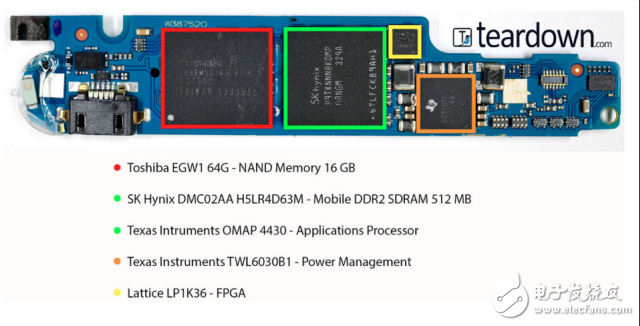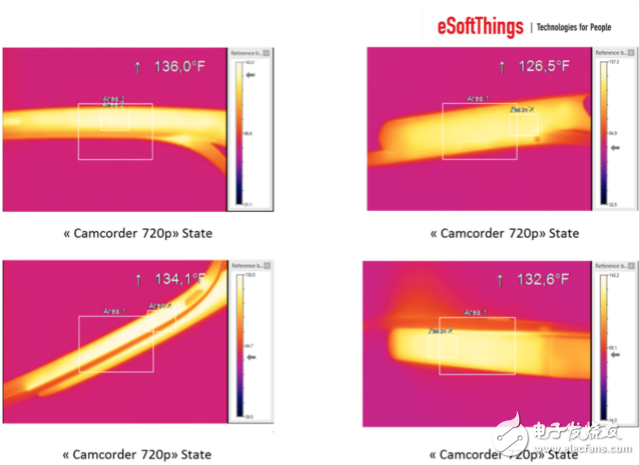Low power consumption may be the key to the success of the smart glasses market
According to TechInsights, low power consumption may be the key to the success of the smart eyewear market. Network equipment provider Cisco expects that 50 billion devices will be connected to the Internet by 2020, and wearable technology will play an important role in the growing 'Internet of Things' space. As consumers, we expect wearables to slowly improve our daily life experience by making sensing, analysis, monitoring and tracking anytime, anywhere, making our lives easier and better. These small networked devices consume very little power, although they collect a lot of data.
One of the notable products is GoogleGlass, which uses advanced wearable technology that not only captures video, browses the Internet, but also brings augmented reality (AR) elements that allow users to interact with their surroundings. Although wearables have a long way to go to meet the current state of the art in smartphones, GoogleGlass is an innovative and timeless product from a hardware and software perspective.
As Goolge decided to stop selling the smart glasses product and reorganize the relevant development team, it clearly shows that Google also needs to change in this regard.
In order to achieve the performance required for wearable devices to truly achieve wearable targets, and to become the next wave of the Internet of Things, there must be significant technological innovation. From a technology and IP point of view, companies that can be at the forefront of this innovative wave are bound to achieve significant success in the near future.
Despite the challenges associated with wearable devices, let's put aside some of the privacy and security issues and focus on the practical factors that make wearables more responsive to wearable needs, such as: "The battery's endurance can be How long does it last?", "Do you feel that the device continues to heat up during use?"
Recently, TechInsights and eSoftThings have worked together to disassemble and analyze the power and thermal performance benchmarks of three smart glasses, including GoogleGlass, VuzixM100 and OpTInventARGlasses. Although the initial goal of this disassembly analysis was to compare the performance of smart glasses, it is worth noting that the power consumption of these three smart glasses is comparable to that of smart phones. Figure 1 shows the experimental setup for a smart glasses benchmark test.

Figure 1: Experimental setup of the smart glasses benchmark.

Figure 2: Power consumption measurements for GoogleGlass, VuzixM100, and OpTInventAR1.
For comparison, (1) Samsung Galaxy S5 smartphone consumes 15.3mWh in flight mode; (2) Samsung HM1200 Bluetooth headset consumes less than 34mWh during voice calls. (Note: not all products have full functionality)
Some smart glasses use more power than smartphones, depending on whether the test case is in basic standby mode or flight mode. This is a very important measurement because one of the keys to the success of wearable technology is finding a way to save battery life while the device is on standby. There are a number of contributing factors that can cause these smart glasses to still experience leakage in standby or standby mode: this is because their power management algorithms have not been optimized. In order to meet the needs of wearable devices, the chipset and software system designed for smartphones are directly designed to be scaled down.
Figure 3 below shows the main chips found on GoogleGlass. Among them, Texas Instruments (TI) OMAP4430SoC can also be found in other mid-range smartphones. This SoC is considered to be the main source of power consumption. Smart glasses may try to emulate a system design similar to a smartphone, but due to inefficient power, it is not possible to work in a similar permanent line mode.
Google Glass and other similar smart glasses allow people to look up and let their hands busy with other, more important tasks. However, in another comparative trial case, Google Glass was five times more powerful in voice calls than a Bluetooth headset. Headset technology may not have all the features of smart glasses, but consumers are more likely to prefer lower power technologies, especially since it won't block your view.

Figure 3: The main IC used to disassemble the GoogleGlass display
As with all electronic products, any higher power consumption is temperature dependent because most of the power is dissipated as heat. This is an important key, because the glasses are very close to the user's face when worn, and safety will be a big concern. When testing in these worst-case situations (such as video recording), the temperature of the smart glasses is as high as 130 °F (Figure 4). Although these surface temperatures may be similar to those of smartphones, this type of technology is not well suited for use on wearable products – because wearables should be designed for long-term use on the skin and body of the user. of.

Figure 4: Thermal analysis of various message box locations when GoogleGlass works in video mode
So, what is the key to achieving the optimal solution for optimal power and performance for wearable technology? Some people say that it is hardware, others say it is software, and many people say that both are important. Perhaps we will soon see patents related to power management algorithms for wearable technology applications, as happened in the past on smartphones. From a hardware perspective, the industry needs a new low-power chipset tailored to the specific requirements of the wearable market. At the same time, software is required to play an important role in optimizing performance and to ensure that all components are effectively integrated and together perform important functions.
According to several media reports, the next new version of GoogleGlass will be replaced by Intel (Intel) processors. Although Intel is struggling to compete with companies such as Qualcomm in the smartphone market, the company has developed high-performance/low-power architecture and process technology. Coupled with Intel's recent investment in Vuzix and its research and development partnership with LuxotTIca, it is expected that the industry giant will soon be able to overcome the technical and market challenges in the wearable field.
It's no surprise that wearable designs directly follow solutions from other mobile device designs due to cost and time-to-market pressures. But now is the time for stakeholders to master design leadership, and it's important to create a comprehensive or vertical proprietary solution for wearable devices that combine hardware and software elements as quickly as possible. In addition, there are many other vendors that are catching up, but who will win in this field in the end? Let us wait and see.
Led Wall Washer Light,Led New Wash Wall Lights,Led Wall Lights Indoor,Indoor Led Wall Washer Light
t-smartlight , https://www.t-smartlight.com
